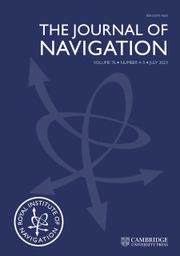No CrossRef data available.
Article contents
Improved fault detection and exclusion method based on generalised least squares model for RTK positioning
Published online by Cambridge University Press: 12 August 2025
Abstract
With increased global navigation satellite system (GNSS) signals and degraded observation environments, the correctness of ambiguity resolution is disturbed, causing unexpected real-time kinematic (RTK) positioning solutions. This paper presents an improved fault detection and exclusion (FDE) method based on the generalized least squares (GLS) model. The correlated GLS model is constructed by regarding double-differencing (DD) integer ambiguities as the known parameters. Meanwhile, the validity of residuals as crucial components of fault detection could be enhanced by the iterative re-weighted least squares (IRLS) method rather than the least squares (LS) without robustness. A static test with artificial faults and a dynamic test with natural faults were carried out, respectively. By analyzing test statistics of the enhanced FDE algorithm and comparing its positioning errors with those from the classical LS, it is shown that our method can provide high-precision and high-reliability RTK solutions facing wrong DD fixed ambiguities due to observation faults.
Keywords
Information
- Type
- Research Article
- Information
- Copyright
- © The Author(s), 2025. Published by Cambridge University Press on behalf of The Royal Institute of Navigation


